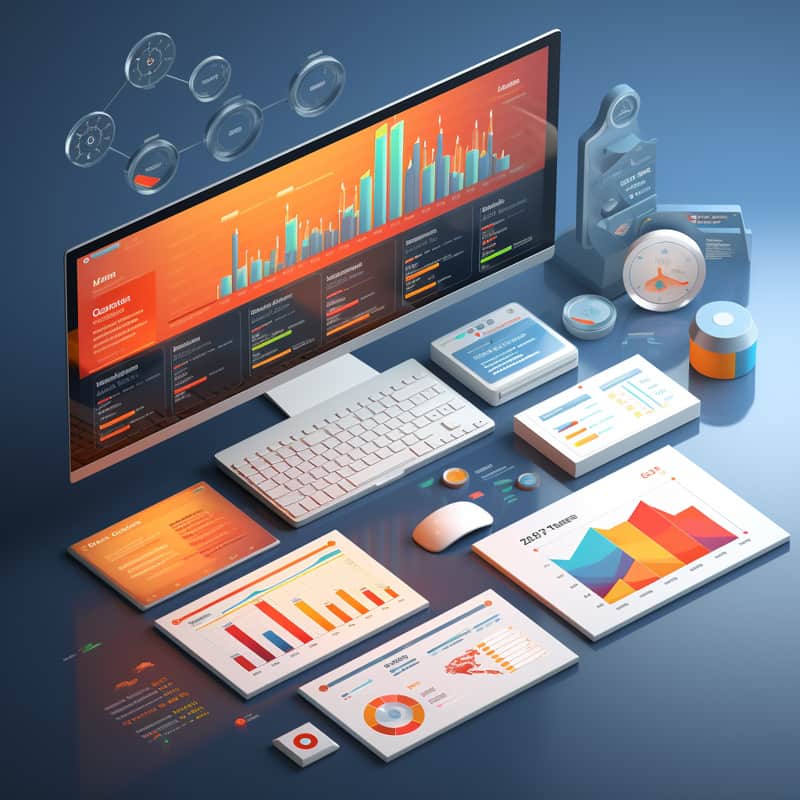Power Platform Interview Questions
Power Platform Interview Question and Answers blog offers a comprehensive resource for preparing for Power Platform interviews.
As we know that power platform architect interview questions can be stressful, we aim to provide helpful tips and advice that can help ensure success during this challenging process.
Our blog will address various Power Platform topics, such as Power Automate, Apps and BI. You will receive sample questions with explanations and solutions to effectively grasp concepts and prepare for interviews.
At Power Platform, we believe that developing these essential soft skills is just as crucial to succeed in Power Platform roles as possessing technical knowledge.
I hope our blog proves valuable and insightful. Best of luck on any upcoming Power Platform interviews.

1. What is the Power Platform?
The Power Platform is a comprehensive suite of tools designed to automate business processes, including basic tasks, chatbot creation, and virtual agent management.
2. What are Power Platform connectors?
Power Platform connectors are a set of operations that allow you to establish connections between data stored in a data source and the data displayed in your front-end application.
They consist of actions and triggers.
3. What are the actions and triggers in Power Platform?
Actions are the actions you want to perform using the connectors, while triggers are the actions you want to perform using the connectors.
4. What is the function of Power Platform connectors?
Power Platform connectors help organisations establish connections between data stored in a data source and the data displayed in their front-end application.
5. What do Power Platform connectors support the types of data sources?
Power Platform connectors support many data sources, including popular services and on-premises data sources such as SharePoint, SQL Server, Office 365, Salesforce, and Twitter.
6. What are Microsoft Power Platform Connectors?
Microsoft Power Platform Connectors are proxy wrappers around APIs provided by services that allow Power Apps and logic apps to interact with their services.
7. What are flow triggers?
Flows triggers are used by flows or logic apps to start the execution of workflows.
8.What is Power Platform’s low code/no code feature?
Power Platform’s low code/no code feature allows users to utilise full capabilities without writing a single line of code, making it easier for organisations to add AI capabilities to their apps.
9. What is the purpose of Power Platform’s low code/no code feature?
The low code/no code feature in Power Platform is to make it easier for organisations to add AI capabilities to their apps without requiring any programming skills.
10. What are the four products included in the Microsoft Power Platform?
The four products in the Microsoft Power Platform are Power B I, Power Apps, Power Automate (formerly Microsoft Flows), and Power Platform.
11. What is the aim of Microsoft with Power Platform?
Microsoft with Power Platform aims to help organisations achieve more efficiently and effectively by delivering more power to the non-technical community.
12. How does Power Platform enhance customer experience?
Power Platform enhances the customer experience by guiding them to specific processes or translating existing conversations with human chat boxes.
13. What is Microsoft Power Platform, and what does it offer?
Microsoft Power Platform is a comprehensive solution for managing business applications and data.
It offers a range of tools and services for creating, sharing, and automating business processes, including PowerApps, Power Automate, and Power BI.
14. What are standard entities and attributes in Microsoft Power Platform?
Standard entities and attributes are pre-defined data structures within Microsoft Power Platform. Legal entities are data fields commonly used in business applications, such as customers, orders, and products.
Typical attributes are the individual data fields within each entity, such as name, address, and phone number.
15. What is the Common Data Service in Microsoft Power Platform?
The Common Data Service (CDS) is a set of standard entities and attributes created by Microsoft through decades of knowledge of data and attributes.
These entities and attributes are stored within the service and can be used by users to manage their data.
16. What are the benefits of using PowerApps in Microsoft Power Platform?
PowerApps is a tool within Microsoft Power Platform that allows users to create custom business applications without writing code.
Some of the benefits of using PowerApps include ease of use, rapid development, and the ability to connect to external systems.
17. What are the default connectors in Microsoft Power Platform?
Standard, premium, and bespoke connectors are available for Microsoft Power Platform.
All PowerApps licensing agreements provide free standard connections that can be utilised with the Microsoft Power Platform.
For both the app and the users, premium connectors need additional licenses.
18. How do custom data connectors work in Microsoft Power Platform?
Custom data connectors in Microsoft Power Platform allow users to connect to their data sources.
These connectors are easily integrated with Power Platform and can retrieve and manipulate data from various sources.
19. What is Microsoft AI Builder?
Microsoft AI Builder is a tool within Microsoft Power Platform that allows users to build more intelligent and innovative applications.
It leverages the capabilities and benefits of artificial intelligence to help users create applications that can learn and adapt to new data.
20. How can AI capabilities be achieved within an application using Microsoft AI Builder?
Applying the suitable data model to your business scenario allows you to achieve AI capabilities within your apps and automation processes using Microsoft AI Builder.
21. What is the Common Data Service, and what are its features?
The Common Data Service is a core component of Microsoft Power Platform, serving as a standard data store or database that is easy to manage, scalable, and provision.
It uses a common data model with standard entity schema and behaviour and comes with a software developer kit or SDK for professional development scenarios.
Power apps and Power Platform can be used to build rich applications and meet daily requirements.
22. What is the difference between PowerApps and Power Platforms?
PowerApps is a visual development environment for building custom business applications without writing code.
Power Platform is a comprehensive platform that includes PowerApps, Power Automate, and the Common Data Service.
Power Platform offers a complete solution for building, managing, and connecting business applications.
23. How is the Common Data Service used in Dynamics 365 applications?
The Common Data Service is used by Dynamics 365 applications, such as Dynamics 365 Sales, Customer Service, and Talent, to secure data used by applications.
This allows users to build apps directly against their core business data within Dynamics 365 without needing integration.
The Common Data Service is available by default, allowing users to build apps and automate day-to-day business scenarios without writing integration logic specifically.
24. What are PowerApps portals?
PowerApps portals are a new addition to the Microsoft Power Platform. They are a web-based portal that allows users to access and use custom business applications built with PowerApps.
PowerApps portals provide a secure and easy way for users to access and use custom applications from any device with an internet connection.
25. What are the key features of Power Apps?
Power Apps is a rapid, low-code development environment for building custom apps for business needs. It allows users to create web and mobile applications on all devices.
26. What are the key features of Power Automate?
Power Automate is a service that allows users to create automated workflows between applications and services, automating repetitive business processes like communication data collections and decision approvals.

Power Platform Training

The Microsoft Power Platform aims to help businesses automate business processes, create chatbots, and manage their virtual agents.
Users can make effective business solutions and achieve career success by understanding the platform’s components and features.
28. What are the key features of Power Virtual Agents?
Power Virtual Agents enable anyone to create powerful chatbots using a guided, no-code graphical interface without the need for data scientists or developers.
This allows subject matter experts to build and maintain conversational solutions, streamlining integration into existing systems with Power Automate and its ecosystem of hundreds of connectors.

29. What is the purpose of actions in Power Automate?
Actions in Power Automate allow interaction with data sources by functions like sending emails or writing new lines.
30. What is Power BI?
Power BI is a business analytics service that delivers inside data analysis, sharing it through data visualisations for fast in-form decisions.
31. What are the benefits of using the Microsoft Power Platform?
The Microsoft Power Platform is a comprehensive tool designed to help businesses automate business processes, create chatbots, and manage their virtual agents.
Users can make effective business solutions and achieve career success by understanding the platform’s components and features.
32. What is the purpose of the Power Platform?
The Power Platform is a suite of services that allows users to build custom solutions using data, processes, and automation.
It includes Power Apps, Power Automate, and Azure Logic Apps.
33. What is the Power Platform solution?
The Power Platform solution offers the ability to create custom connectors for connecting to Power Apps and Power Automate, allowing users to build custom connectors to bridge their apps or workflows to the A P I.
34. What are the security features of the Power Platform solution?
Security features of the Power Platform solution include authentication with Azure Active Directory, authorisation down to the row and feel level and rich auditing capabilities.
35. What is the purpose of logic in the Power Platform solution?
Logic in the Power Platform solution allows users to apply business logic at the data level, ensuring the same rules apply regardless of user interaction.
36. What are the integration options in the Power Platform solution?
Integration options in the Power Platform solution include APIs, webhooks, eventing, and data exports, providing data in and out flexibility.
37. What is the purpose of data storage in the Power Platform solution?
Data storage in the Power Platform solution allows users to shape their data, discover, model, validate, and report on it. In contrast, storage in Azure Cloud removes the burden of worrying about data location or scaling.
38. What is the app studio in Power Apps?
The app studio is the primary tool for developing Power Apps. It is accessible via make.powerapps.com and provides an overview of building a sample canvas app using Power Apps.
39. How are data records displayed in Power Apps?
In Power Apps, data records are displayed using the gallery control. This control allows users to view and manage data records, with customisable templates for each.
40. What are input controls in app development?
Input controls are essential for creating a functional and aesthetic app experience. These controls include text inputs, buttons, drop-downs, toggles, date controls, and sliders.
These controls can be added to galleries, forms, and screens to create a user-friendly app for business processes.
41. What is the importance of the Microsoft Power platform?
Microsoft Power platform is a powerful tool for app development that offers a user-friendly interface for creating and managing apps.
42. What are the key features of the Microsoft Power platform?
The key features of the Microsoft Power platform include a details screen, an edit or create screen, and save options for visibility on a device.
43. How do users access the Microsoft Power platform?
Users can access the Microsoft Power platform by downloading it from the respective app store, signing in with their username and password, and exploring the app from their phone.
44. What are the functions of the Microsoft Power platform?
The Microsoft Power platform functions allow developers to express logic and control navigation, filtering, sorting, and other functionality without writing complex application code.
45. What are the functions of app development?
Functions are the glue that binds these controls, inputs, and data sources together.
They can be used to create formulas in apps, similar to Excel language, for actions like sending data to the data source, formatting information, and creating animations.
46. What are the building blocks for model-driven apps in the Microsoft Power platform?
The building blocks for model-driven apps in the Microsoft Power platform include data, entity field relationships, optional sets of field data, and user interfaces.
47. What are entities in the Microsoft Power platform?
Entities in the Microsoft Power platform are items with properties that can be tracked.
48. What are the fields in the Microsoft Power platform?
Fields in the Microsoft Power platform are properties associated with an entity.
49. What are the relationships in the Microsoft Power platform?
Relationships in the Microsoft Power platform define how entities can be related to each other.
50. What are optional set fields in the Microsoft Power platform?
Optional set fields in the Microsoft Power platform allow users to select among predefined options.
51. What are user interfaces in the Microsoft Power platform?
The Microsoft Power platform user interfaces include apps, site maps, forms, and views.
52. How do model-driven apps differ from canvas apps in the Microsoft Power platform?
Model-driven apps differ from canvas apps in that they do not require code but instead rely on the components added to the app.

Power Platform Online Training

Metadata-driven architecture in the Microsoft Power platform allows designers to customise apps without writing code.

54. How do users build an app using metadata-driven architecture in the Microsoft Power platform?
Users build an app using metadata-driven architecture in the Microsoft Power platform by modelling business data, defining business processes, making the app, and finally building the app.
55. What is Microsoft Power Apps in Power Platform?
Microsoft Power Apps is a user-friendly interface for app development that allows developers to create and manage apps without writing complex code.
56. What are the building blocks of app design in Microsoft Power Apps?
The app design in Microsoft Power Apps consists of several building blocks, including the app’s fundamentals, navigation, data entry fields, views, logic, and visualisation.
57. What are the essential components of a model-driven app in Microsoft Power Apps?
The essential components of a model-driven app in Microsoft Power Apps include the app’s business process flow, workflow, actions, rules, and automation.
58. What are business process flows in Microsoft Power Apps?
Business process flows in Microsoft Power Apps walk users through standard business processes.
59. What are flows in Microsoft Power Apps?
Flows in Microsoft Power Apps are cloud-based services that enable automated workflows between apps and services.
60. What are visualisation components in Microsoft Power Apps?
Visualisation components in Microsoft Power Apps determine the type of data and reporting available, with components like charts, dashboards, and embedded Microsoft RBI tiles.
61. What are Power Platform environments?
Power Platform environments are predefined security roles that reflect simple user tasks and access levels. These roles ensure the minimum amount of business data is provided.
62. What are some examples of Power Platform environments?
Some examples of Power Platform environments include system administrators, STEM customers, everyday data service users, and delegate rights.
63. What are Power Platform portals?
Power Platform portals are secure access points to data for internal and external users, either anonymously or through commercial authentication.
They provide self-service capabilities for customers, such as searching knowledge articles, engaging with other customers, and creating support cases.
64. How is a Power Platform Portal built?
A Power Platform Portal is built on top of standard data services. It includes components such as Power Platform Portal Studio, web pages, page templates, content snippets, entry lists, and entry forms.
65. What are some benefits of using a Power Platform Portal?
Some benefits of using a Power Platform Portal include building a sales pipeline, empowering employees, and engaging the mobile workforce.
It also allows for a complete content management system with all content stored in traditional data services.
66. How does Power Platform integrate with the Microsoft ecosystem?
Power Platform integrates directly with the Microsoft ecosystem.
67. What are the available AI models in Power Platform?
There are currently four available AI models in Power Platform: form processor, object detector, prediction, and text classification.
68. What is the purpose of the AI models in Power Platform?
The AI models in Power Platform provide a user-friendly interface for building and training models, unlocking the power of Azure machine learning and cognitive services without writing a single line of code.
69. How does Microsoft Power Platform allow users to create and customise automation flows?
Microsoft Power Platform provides users with templates that can be searched by word or category and extended to meet business needs. Users can modify the flow by adding actions or changing specific steps.
Flows consist of a trigger and one or more actions, and data operations such as compose, create CSV tables, join, and select are also available.
70. How can Power Automate be a Platform?
Power Platform can be administered on the web via partial or building flows, providing flexibility for platform administration.
71. What are slow templates in Power Platform?
Slow templates can be found directly from the Power Automate builder websites, allowing users to start from a template when creating a flow.
72. What are some of the concepts in Power BI?
Power BI concepts include datasets, reports, dashboards, workspaces, shared and dedicated capacities, and data sets.
73. What are workspaces in Power BI?
Workspaces are continuous for Power BI dashboards, reports, data sets, and data flow.
There are two types: My workspace, where users can collaborate and share content with colleagues, and workspaces, where users can create, publish and manage apps for their organisation.
74. What are data sets and their purpose in Power Platform?
Data sets are collections of data that can be imported or connected to, and Power Platform allows users to connect to and import various data sets and bring them together in one place.
They are essential for business intelligence, as they help establish standardised data sets that can be the one source of truth.
75. What are shared data sets and their importance?
Shared data sets are essential for business intelligence, as they help establish standardised data sets that can be the one source of truth.
Report creators can start with optimised data sets to build accurate reports, ensuring consistent data for decision-making and a healthy data culture.
76. What are Power Platform reports, and how are they created?
Power Platform reports are visualisations, such as line charts, maps, and three maps, which can be created from scratch within Power Platform.
77. What are dashboards in Power Platform, and how are they created?
Dashboards are single canvass that contain tiles and widgets and can be pinned to a dashboard as a single tile.
They can be created with shared dashboards or by connecting to data sets from Excel, desktops, databases, and SaaS applications.
78. What are Power Platform template apps and their purpose?
Power Platform template apps enable partners to build with little or no coding and deploy them to any Power Platform customer.
This allows partners to create out-of-the-box content for their customers and publish it themselves.
79. What is the Power Platform, and what are its applications?
Power Platform is a powerful data management system that allows users to create dashboards, reports, data sets, and data flows.
It can be made with shared dashboards or by connecting to data sets from Excel, desktops, databases, and SaaS applications. Organisations can improve their data management and decision-making processes by understanding these concepts and their applications.

80. What are the benefits of using Power Platform for managing data, enhancing collaboration, and streamliningbusiness processes?
The benefits of using Power Platform for managing data, enhancing collaboration, and streamlining business processes include automating common inquiries, reducing costs, improving customer satisfaction, and empowering subject matter experts to create chatbots quickly and easily using a no-code, intuitive, and code-free graphical interface.
In this blog, we have reviewed various Power Platform DeveloperInterview Questions. These cover technical and non-technical queries, highlightingtheir utility in solvingreal-world business issues.
Overall, we aimed to offer a comprehensive resource to candidates preparing for MicrosoftPower Platform interviews.
We hope this blog has proven helpful in your preparations and provided more insight into what these tools offer you and their capabilities.
Be ready to demonstrate how the Power Platform tools can be utilised for business problems with appropriate preparation and approach. Then, your Power Platform interview may prove successful!

Power Platform Course Price


Sindhuja
Author